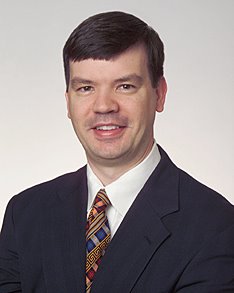
Being someone who did advanced fellowship training in breast reconstruction, I was interested in the article in today's New York Times, "Some Hidden Choices in Breast Reconstruction".
I came away somewhat disappointed. The article tangentially discusses the issue of some advanced breast reconstruction techniques and how they aren't always offered or discussed by surgeons. It mostly centers around some of the more advanced microsurgical breast reconstructions using what are called "perforator flaps", which are much more laborious then traditional muscle flap surgeries or implant based reconstruction techniques. Those operations are very elegant, lengthy, and complex cases whose "true value" is hard to demonstrate either in outcome data or to bean counters (who just pay attention to how much things cost). The editorial tone is basically suggesting that there's some conspiracy to not talk about these procedures to patients and that these advanced procedures are the most ideal reconstruction.
I have a few thoughts on this
1. I touched upon the resources and cost to the system of demanding the most exotic types of surgeries for all comers last October 2007 entitled "A Breast Reconstruction Lawsuit - Can We afford Cadillacs for all?" which involved a patient suing her insurer for NOT covering a redo operation with one of the perforator microsurgical flaps discussed in the article.
I asked the question then:
In a scenario like the one involved here (lawsuit over non-coverage), should someone have the right to demand complex and expensive surgery when less expensive options are available?
I'm conflicted here. It does not seem completely outrageous to me for this company to deny this request or at least ask the patient to pay part of the balance difference given the particulars as I understand them. She had an acceptable reconstruction with implants, and needs a quick & relatively inexpensive surgery to maintain her result. In other countries with state-funded ("universal") health care programs, I suspect there's no way in hell this would be approved. In an era of cost-containment, all health care costs are going to be scrutinized and there will be hard choices to make. Luxuries like exotic breast reconstruction almost two decades after the initial surgery seem hard to justify in that context
We just cannot afford the most exotic procedures and technologies for every indication in every patient. Complicating this issue with breast surgery is that these types of procedures are arguably cosmetic procedures rather then functional surgeries (ie. a reconstructed breast reproduces a secondary sex characteristic but does not lactate). As a society in the US, we've come treat this topic differently through legislation guaranteeing breast reconstruction after mastectomy. This did not however, promise funding however, and the savaging of reimbursement for the long procedures and large amount of aftercare have functionally served to ration patients access to breast reconstruction.
2. Surgeries involving your own tissue have significantly more morbidity up front then tissue expander/implant procedures. They are not appropriate for everyone, particularly the very fit, smokers, obese patients, or the elderly. The complications from these operations can be MUCH more spectacular then expander procedures.
In general, I think TRAM, DIEP, and other described flaps are best reserved for young patients with small-medium breasts who are only having one sided mastectomies. The benefit in them is the natural "aging" of the flap more like the remaining breast. For bilateral mastectomies I (and most surgeons) think it is an absolute no-brainer to use tissue expanders in most patients in terms of recovery, cost, and symmetric result of the reconstruction. The improvements in implant designs that we should have available this winter make this an even stronger recommendation for most patients. Surgeon's who
I'm trained in just about everything, but I do implant based reconstruction on probably 7 or 8 out of ten patients as it's the best choice for most people. Keep in mind, that's coming from someone (me) who's favorite operations are TRAM's and Latissimus breast reconstruction. IF you look at the rest of the world, similar % of patients are reconstructed in this fashion which I think represents a collective pragmatic balancing of costs and benefits.
Rob











